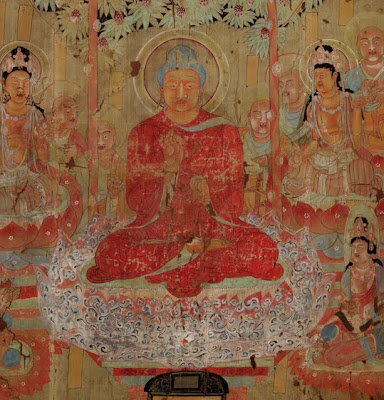Teaching Chinese Astronomy

For many thousands of years, man has attempted to make sense of the sky by naming and grouping stars into recognisable patterns. At the turn of the twentieth century, Marc Aurel Stein, a Hungarian-born, British archaeologist uncovered the world’s oldest existing star chart in a Buddhist cave complex in Dunhuang, China. The chart, now known as the Dunhuang Star Atlas and probably dating from before AD 700, was just one of a large number of important manuscripts, printed documents and paintings which were found at the site, and which tell us much about social, religious and political issues in medieval China and Central Asia. But the Star Atlas – now held at the British Library in London – is also proving important for our current understanding of astronomical history due to the accuracy and detail it provides about the sky seen from China from such an early period.
Visit the IDP website to download a free classroom wallchart on the Chinese Sky, view educational material on many Silk Road themes, and view our new resource on Chinese Astronomy which aims to :
• Introduce the Dunhuang Star Atlas and explain its importance as a historical and scientific document
• Offer an introduction to astronomy and explain the place it has occupied in Chinese history and culture.
• Introduce the most important Chinese constellations and the myths associated with them.
• Look at the links between Chinese astronomy and astrology and explore the Chinese ‘zodiac’.
• Offer ideas for classroom activities and downloadable resources for teachers.
• Link to related websites and other sources of information.








If you have feedback or ideas about this post, contact us, sign in or register an account to leave a comment below